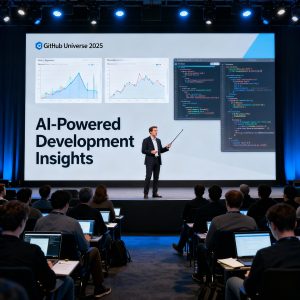In the era of generative AI and massive language models, natural language processing has become one of the most dynamic fields in technology. Yet, amid all the innovation, the foundations of linguistics remain vital. Modern models may generate fluent text without explicit grammar modules, but linguistic principles still underpin the field’s ability to interpret, evaluate, and improve these systems.
The acronym RELIES—representing Resources, Evaluation, Low-resource settings, Interpretability, Explanation, and the Study of language—captures six essential areas where linguistics continues to shape NLP practices.
The Continuing Role of Linguistics in NLP
Since the rise of large-scale transformer architectures, many have argued that deep learning enables NLP systems to operate independent of linguistic rules. However, linguistic knowledge still drives critical aspects of how models are built and analyzed. From data selection and annotation to interpretability tools and cross-lingual transfer, the insights of linguists remain crucial for advancing machine understanding of language.
Even as statistical and neural models dominate research discussions, the field still draws insights from linguistic theory, particularly in the design and evaluation of tasks focused on syntax, semantics, and discourse representation.
Understanding the RELIES Framework
The RELIES model helps illustrate six interconnected areas where linguistics continues to contribute to NLP innovation and stability.
Resources
Effective NLP depends on carefully designed linguistic resources such as corpora, lexicons, and annotated datasets. Linguistic expertise ensures that these resources capture variation across dialects, genres, and sociolects.
Tasks like translation, sentiment analysis, and summarization rely on data informed by linguistic understanding of language diversity and labeling accuracy. Projects such as Universal Dependencies and Abstract Meaning Representation are examples of linguistically informed frameworks that enable consistent parsing and semantic analysis across hundreds of languages.
Annotation quality also benefits from linguistic proficiency. Trained annotators create more consistent and interpretable datasets, facilitating more accurate benchmark scores and better model behavior.
Evaluation
Linguistics directly influences how NLP systems are evaluated. Human and automated evaluations both rely on linguistic insight to measure fluency, coherence, and syntactic correctness.
Benchmarks involving morphosyntax or semantic entailment illustrate the importance of language-aware evaluation methods. Linguistic analysis also enhances diagnostic tools, helping researchers identify specific weaknesses in systems, such as gender bias in coreference or sensitivity to negation.
New evaluation metrics increasingly incorporate semantic and discourse-level linguistic properties, ensuring that scores reflect true language understanding rather than surface-level pattern matching.
Low-Resource Language Processing
Linguistics provides critical tools for addressing one of NLP’s greatest challenges—developing technology for languages with little or no data. In such cases, understanding phonology, morphology, and typology helps researchers design better model architectures and data augmentation techniques.
Beyond technical benefits, collaboration with communities and linguists enables ethical and sustainable practices for documenting endangered or underrepresented languages.
This interplay demonstrates that linguistic knowledge is essential not only to improve accuracy in low-resource contexts but also to ensure responsible use of AI technologies.
Interpretability and Explanation
Interpreting complex neural language models requires a shared language of analysis—a metalanguage—that linguistics provides. By describing model behavior using precise linguistic categories, researchers can explain how models represent syntax, semantics, and discourse-level relationships.
Interpretability research often uses linguistic probing techniques that reveal how models learn different language structures. This fosters greater transparency in system outputs and allows the identification of where language models fail to capture meaning properly.
Without linguistic theory, model interpretability would lack the conceptual grounding needed to draw reliable conclusions about model comprehension and reasoning.
Explanation
Building on interpretability, linguistic frameworks aid efforts to connect model internals with human-understandable concepts. By mapping latent representations to known linguistic structures, researchers can track features such as part-of-speech, tense, or dependency patterns within neural networks.
These efforts ensure that explanations about model decisions go beyond statistics, revealing how machines approximate elements of human understanding in language.
Study of Language
Finally, linguistics remains central not only as a resource but also as an application for NLP. Computational tools enable linguists to study syntax, semantics, and stylistic variation at scale.
NLP advances are accelerating fields such as corpus linguistics, historical language documentation, and applied linguistics in education and translation. Language-focused research benefits from machine-assisted methods that provide new ways to analyze linguistic change and structure.
This collaboration is mutually beneficial: linguistic research enhances NLP’s depth, and NLP provides powerful analytical tools for language science.
The Enduring Connection Between NLP and Linguistics
Though the tools have evolved, the partnership between linguistics and NLP remains inseparable. Today’s language models inherit decades of linguistic modeling, even when that influence is not explicitly visible.
As NLP systems approach human-like fluency, the need for linguistically grounded evaluation, dataset curation, and interpretability increases. Linguistic frameworks ensure that future developments in AI-driven communication are both scientifically sound and socially responsible.
Whether used to design multilingual datasets, evaluate generative text, or interpret the logic behind AI outputs, linguistics continues to serve as a guiding framework for the next generation of language technology.
Read more such articles from our Newsletter here.



